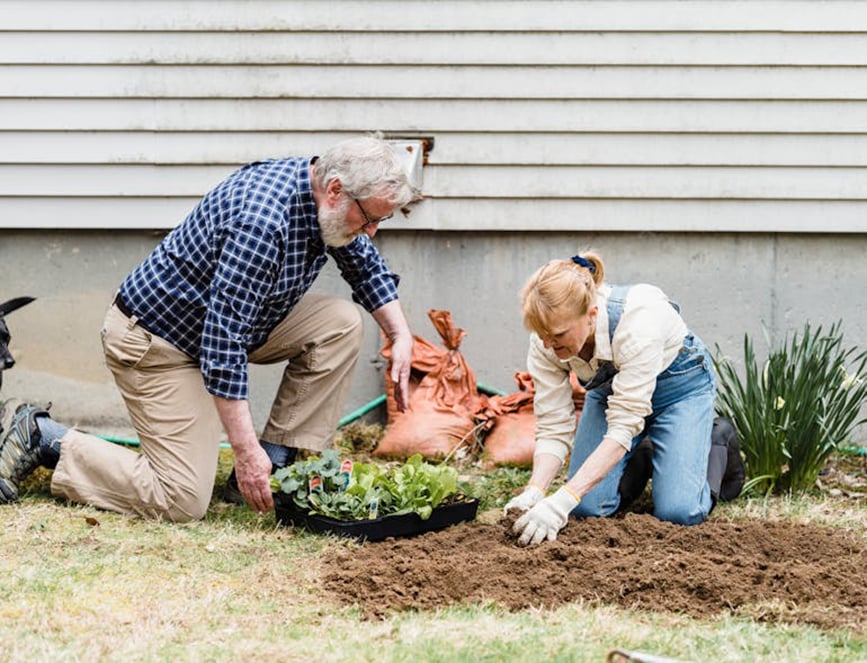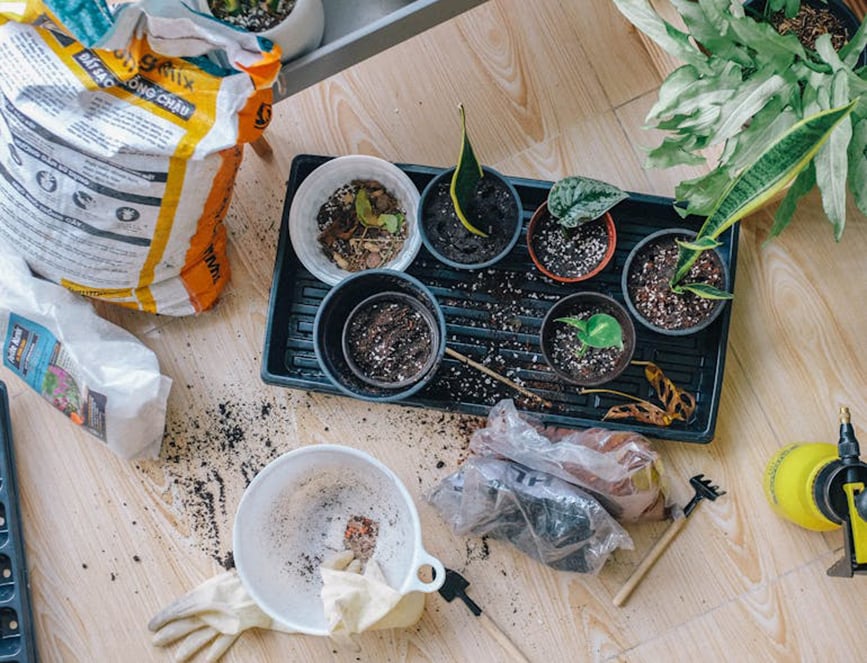 |
| Transforming your yard can be satisfying, but it also comes with risks. Flying debris, sharp tools, and harsh chemicals can cause injuries if you’re not prepared. That’s why using the right safety gear every DIY landscaper should own is essential before starting any project. Whether you’re trimming hedges or moving stones, having the proper gear keeps you safe and focused. Here, we’ll cover the must-have equipment to protect yourself while working outdoors efficiently. |
| Protective Eyewear: Guard Your Vision |
Your eyes are constantly at risk when using power tools, trimming bushes, or mowing dry grass—protective eyewear shields against flying debris, dust, and chemical splashes. Whether you're growing your first garden or maintaining a large backyard, your eyes need the same level of care.
So, choose safety glasses with wraparound lenses and UV protection. Anti-fog coatings help during hot days. For high-risk tasks, go with ANSI-certified goggles. Always inspect for cracks before each use. Vision injuries are preventable with the right gear—don't treat eye protection as optional. It's one of the smartest safety steps you can take.
|
| Hearing Protection: Block Out Harmful Noise |
Noise from mowers, chainsaws, and trimmers can damage your hearing faster than you think. Even short exposure to loud tools can cause long-term harm. While it’s important to maintain your tools to reduce noise and wear properly, you also need hearing protection. Foam earplugs are easy to use and affordable. Earmuffs offer stronger coverage and comfort during long tasks.
For added safety, try electronic hearing protectors that block harmful sounds while letting you hear conversations. Protecting your ears is simple but crucial. Once hearing is lost, it doesn’t come back—so don’t skip this step in your gear.
|
 |
| Gloves are a must part of essential safety gear every DIY landscaper should own |
| Gloves: Protect Your Hands from Cuts and Irritation |
Working with soil, stone, and sharp tools exposes your hands to constant risk. Cuts, splinters, and chemical burns are common without proper protection. That’s why gloves are part of the safety gear every DIY landscaper should own. Leather gloves are great for handling rough materials, while nitrile-coated gloves offer flexibility and grip for delicate tasks.
Use heavy-duty rubber gloves when dealing with fertilizers or sprays. A snug fit prevents blisters and slipping. Wash gloves regularly and replace them when they show signs of wear. Keeping your hands protected lets you work longer, safer, and with better control over your tools.
|
| Heavy Lifting or Moving Established Features |
Heavy outdoor tasks demand more than just effort—they require smart safety practices and protective gear. Even experienced DIYers should take extra precautions when handling complex projects like transplanting trees or shifting large planters. These jobs put strain on your back, hands, and feet.
So, wear a supportive back brace to reduce injury risk. Steel-toed boots and thick gloves add extra protection. When relocating your garden, it’s easy to overlook the strain that comes with moving soil, pots, or fencing. Use wheelbarrows, lifting straps, and solid footwear to stay safe and avoid injury while handling heavier outdoor elements.
|
| Footwear: Keep Your Feet Safe and Supported |
Your feet take the brunt of every outdoor project. Sharp tools, uneven ground, and heavy items pose constant threats. That’s why sturdy footwear is essential. Choose steel-toe boots to protect against dropped tools or stones. Look for pairs with slip-resistant soles to avoid falls on wet grass or loose dirt.
Waterproof materials keep your feet dry during irrigation work or muddy tasks. High-ankle designs offer extra support and prevent sprains. Good shoes don’t just prevent injury—they improve your balance and stability while working, especially during long or physically demanding DIY yard projects.
|
| Respiratory Protection: Avoid Breathing in Dust or Chemicals |
Breathing in dust, pollen, or chemical fumes can irritate your lungs and lead to long-term health problems. Wearing the right mask prevents these risks. Use a dust mask for light tasks or an N95 respirator for more serious exposure. Proper fit is key for full protection.
Many people use fertilizers or sprays to grow a strong and healthy garden, but don’t realize the respiratory danger involved. Change filters as needed and store masks in a clean, dry place. Protecting your lungs is just as important as guarding your eyes or hands.
|
 |
| While maintaining your yard, you’ll use different types of chemicals and tools, so stay safe |
| Long Sleeves and Pants: Shield Your Skin |
Wearing long sleeves and pants helps protect your skin from sunburn, scratches, and insect bites. This simple clothing choice blocks thorny bushes, sharp grass, and chemical sprays. Lightweight, breathable fabrics keep you cool while offering full coverage. For added protection, choose UV-rated clothing that reflects harmful rays.
Quick-dry materials make washing and reuse easy. It’s a smart way to stay comfortable and safe during yard work. Long sleeves and pants are an essential part of the safety gear every DIY landscaper should own to reduce injury and remain focused on the task.
|
| High-Visibility Clothing: Stay Seen in Busy Areas |
Working near driveways, sidewalks, or roads adds a visibility risk many overlook. High-visibility clothing helps others see you clearly, reducing the chance of accidents. Wear reflective vests or bright-colored shirts when working early in the morning or late in the day. Lightweight and breathable options are available for warm weather. Choose gear with reflective strips for added safety.
Even in your yard, drivers or neighbors may not spot you easily. Staying visible is a simple way to prevent accidents while working near moving vehicles or in low-light outdoor conditions.
|
| First Aid Kit: Always Be Ready for Small Accidents |
Accidents can happen quickly—even during simple tasks. Having a first aid kit nearby helps you treat cuts, scrapes, or insect bites fast. Stock it with bandages, antiseptic wipes, tweezers, and pain relievers. Include allergy medicine and bite cream if you’re working around plants or bugs.
Use a waterproof container to keep everything clean and dry. Check the kit regularly and replace used or expired items. A well-prepared first aid kit is a must for any outdoor project, giving you peace of mind while handling sharp tools, rough materials, or chemical products
|
| Gear Up Before You Dig In |
| No matter the project size, preparation keeps you safe and productive. Investing in safety gear every DIY landscaper should own helps prevent accidents and reduce strain. From gloves to goggles, each item plays a role. Don’t wait for an injury to happen before you dig, cut, or lift. Your safety is the first step to a successful day outdoors. |
Image Credits
Couple Gardening by Greta Hoffman
Plants in Pots by Huy Phan
Plant Being Held by Gloves Kaboompics.com
|